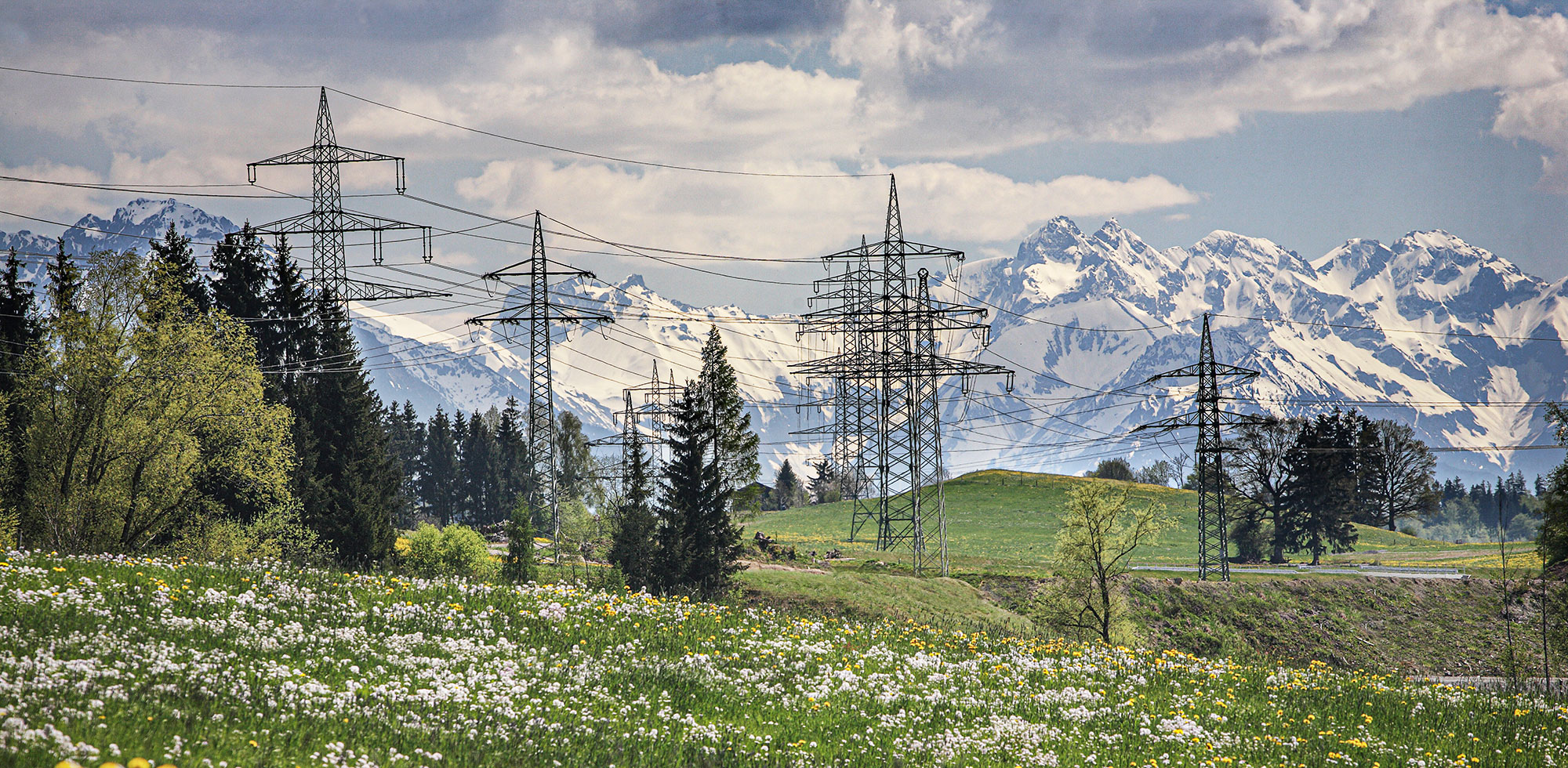Management of reactive power in distribution grids: Fraunhofer IEE and partners develop new method
With the decentralisation of power generation, distribution grid operators are increasingly required to mobilise reactive power depending on the situation. In the research project "RPC2", Fraunhofer IEE, together with partners from grid operation and the University of Kassel, has now developed procedures with which grid operators can control generation and other plants in the medium and high-voltage level in such a way that they provide reactive power according to demand. Another focus was on the exchange of reactive power between the different grid levels. In a cross-grid field test, AllgäuNetz and LEW Verteilnetz successfully tested the methods in practice.
"As long as conventional power plants carry a large share of electricity generation, the supply of reactive power in the distribution grid is more or less a self-selling item," says Prof. Dr. Martin Braun, head of the Grid Planning and Grid Operation division at the Fraunhofer Institute for Energy Economics and Energy System Technology IEE and professor at the University of Kassel. “However, in an increasingly decentralized generation landscape, this task is becoming far more complex. With our research project RPC2, we are demonstrating how distribution grids can be supported with innovative decentralized and centralized methods for managing reactive power."
The "Reactive Power Control 2" (RPC2) research project was funded by the German Federal Ministry of Economics and Climate Protection as part of the "Zukunftsfähige Stromnetze", future-proof electricity grids, funding initiative. In addition to AllgäuNetz GmbH & Co. KG, LEW Verteilnetz GmbH and the University of Kassel, PSI Software AG was involved in the project as an associated partner. The project was managed by Fraunhofer IEE.
Live measurement data for the developed procedures
In the first phase of the RPC2 project, the Fraunhofer researchers developed new procedures for requesting reactive power from decentralized generation plants, compensation plants and transformer staging in the high and medium voltage grid. They then implemented these procedures in Fraunhofer IEE's "beeDIP" software - a platform that allows to expand control rooms with external components, to integrate data and algorithms and test new concepts for operations management.
This enabled the researchers to supply the developed procedures with live measurement data from the control rooms of AllgäuNetz and LEW Verteilnetz. "With the mapping of dynamic measured values from the medium voltage in the static network data, a detailed picture of the distribution networks of the two project partners was created," explains RPC2 project manager Dr Sebastian Wende-von Berg from Fraunhofer IEE.
Prior to the field test the researchers tested the methods for reactive power control extensively in the laboratory. For this purpose, they represented the coupled distribution grids of the partners in the "OpSim" system - a simulation environment developed by Fraunhofer IEE and the University of Kassel - in order to be able to observe and analyze the effects of the developed procedures.
Demonstrators in the distribution grids
After successful completion of the laboratory tests and in compliance with the highest safety criteria, the partners then implemented reactive power computers as demonstrators in the distribution grids of AllgäuNetz and LEW Verteilnetz, with the demonstrators being in contact with each other via a secured VPN connection.
Using the measured values and switching states exported from the respective grid control system, the demonstrators were able to perform calculations to optimize the reactive power flow in their own as well as in the coupled 110 kV distribution grid. From these calculations, the demonstrators then derived setting proposals for selected generation and industrial compensation plants in the medium-voltage level. The control center staff finally implemented these suggestions via a manual control command using telecontrol technology.
"Important contribution to the reactive power budget of the grid"
For the participating plants to be able to receive, process and fulfil the order to supply reactive power, it was essential to first adapt the plant technology to the new tasks. In this process, the operators of the plants worked closely with their manufacturers as well as with AllgäuNetz and LEW Verteilnetz.
"The results of the field test demonstrate that with the developed procedures the individual plants can deliver the required reactive power values with pinpoint accuracy," summarizes Fraunhofer researcher Dr Frank Marten. "This enables them to actively contribute to the reactive power balance of the grid."
Technical contact:
Dr. Sebastian Wende-von Berg, sebastian.wende-von.berg@iee.fraunhofer.de
Dr. Frank Marten, frank.marten@iee.fraunhofer.de
Partners
LEW Verteilnetz (LVN)
As a regional distribution grid operator, LEW Verteilnetz GmbH ensures reliable and secure operation of the electricity grid and guarantees non-discriminatory grid access. The network area of LEW Verteilnetz GmbH covers Bavarian Swabia and parts of Upper Bavaria. LEW Verteilnetz GmbH is a subsidiary of Lechwerke AG (LEW). Further information at www.lew-verteilnetz.de.
AllgäuNetz (AN)
AllgäuNetz GmbH & Co. KG is the responsible distribution network operator for large parts of southern Allgäu. The distribution network operated by AllgäuNetz covers 5,500 km of lines in an area of approx. 1,700 km². AllgäuNetz GmbH & Co. KG is a joint venture of Allgäuer Kraftwerke GmbH, Allgäuer Überlandwerk GmbH, Energiegenossenschaft eG Mittelberg, Energieversorgung Oberstdorf GmbH and Energieversorgung Oy-Kressen. Further information at www.allgaeunetz.com.
University of Kassel, department e²n
As part of the KDEE and in close cooperation with the Fraunhofer IEE, the department "Energy Management and Operation of Electrical Networks" (e²n) represents in research and teaching the technically and economically optimised design, control and operational management of the future decentralised energy supply system (smart grid) with a high proportion of renewable energies as an important challenge of the energy transition to ensure a secure, cost-efficient and sustainable energy supply.
PSI Software AG
Based on its own software products, PSI Group develops and integrates complete solutions for optimizing the flow of energy and materials for utilities (energy networks, energy trading, public transport) and industry (mining, metals production, automotive, mechanical engineering, logistics). Further information at https://www.psi.de/en/home/
Last modified:
